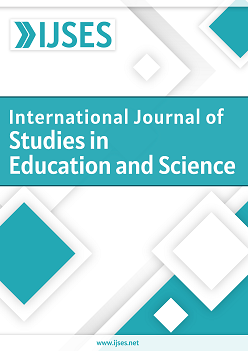Measuring University Staff Mobility Impact in Higher Education
DOI:
https://doi.org/10.46328/ijses.117Keywords:
Higher Education, Staff mobility, Mobility ImpactAbstract
The paper addresses an issue within the field of higher education that has been discussed since the inception of the Erasmus mobility programme in 1987 - how to properly measure the impact of the staff mobility (academic and administrative). Students have a clear roadmap when it comes to the mobility practice and impact assessment but when it comes to staff mobility, impact assessment is less clear. For academic staff mobility, certain metrics can be used to objectively assess outcomes, but when it comes to the administrative staff, matters become more abstract as there are no widely used common metrics. This paper proposes a tool – the Mobility Matrix, that allows to measure the staff mobility impact using quantitative and qualitative data. The Mobility Matrix offers 10 characteristics of the mobility period that can be assessed at 3 levels for the quantitative part and three text fields for the qualitative part. This tool was tested at Riga Technical University (2023) for the assessment of the staff mobility impact. If the staff member provides credible and accurate data, the Mobility Matrix has the potential to become a common practice in higher education, allowing for new recognition mechanisms of staff mobility to emerge.References
Valtins, K. & Sarma, Z.E. (2024). Measuring university staff mobility impact in higher education. International Journal of Studies in Education and Science (IJSES), 5(4), 515-536. https://doi.org/10.46328/ijses.117
Downloads
Published
Issue
Section
License
Articles may be used for research, teaching, and private study purposes. Authors alone are responsible for the contents of their articles. The journal owns the copyright of the articles. The publisher shall not be liable for any loss, actions, claims, proceedings, demand, or costs or damages whatsoever or howsoever caused arising directly or indirectly in connection with or arising out of the use of the research material.
The author(s) of a manuscript agree that if the manuscript is accepted for publication in the International Journal of Studies in Education and Science (IJSES), the published article will be copyrighted using a Creative Commons “Attribution 4.0 International” license. This license allows others to freely copy, distribute, and display the copyrighted work, and derivative works based upon it, under certain specified conditions.
Authors are responsible for obtaining written permission to include any images or artwork for which they do not hold copyright in their articles, or to adapt any such images or artwork for inclusion in their articles. The copyright holder must be made explicitly aware that the image(s) or artwork will be made freely available online as part of the article under a Creative Commons “Attribution 4.0 International” license.

This work is licensed under a Creative Commons Attribution-NonCommercial-ShareAlike 4.0 International License.





